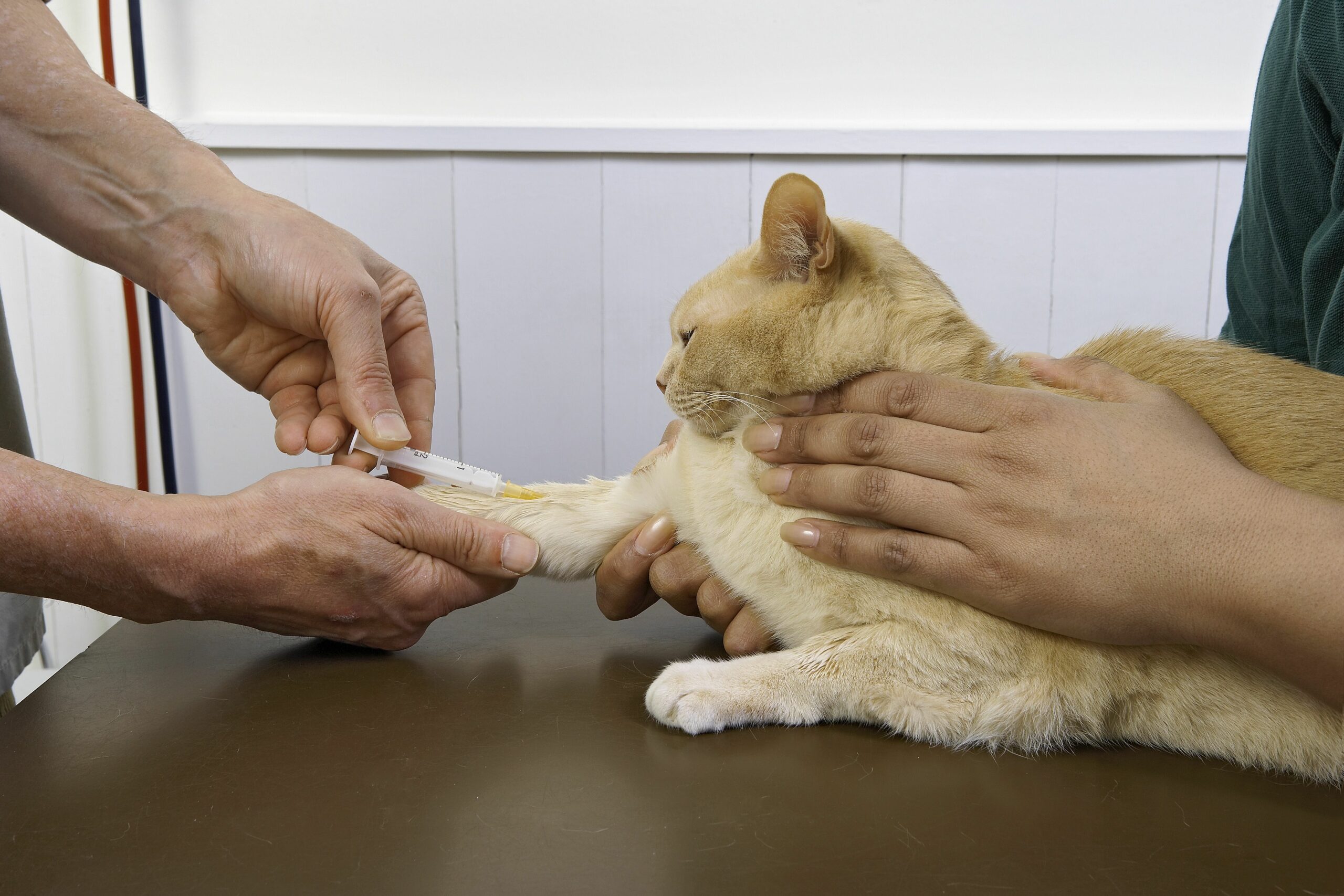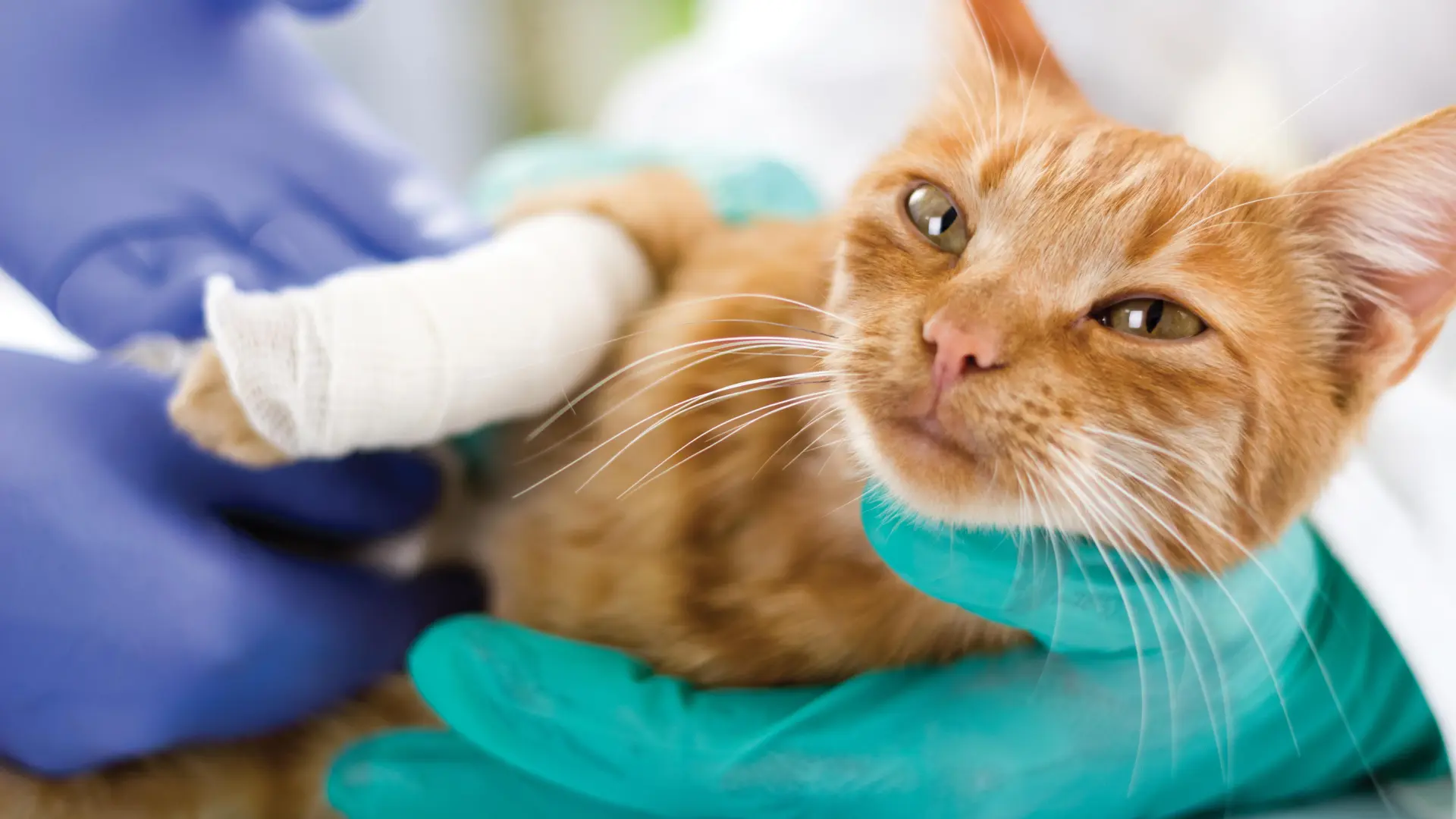Causes of Adenocarcinoma in Cats

Risk Factors
The causes and risk factors of adenocarcinoma in cats are multifactorial and can be attributed to a combination of genetic, environmental, and lifestyle factors.
Causes of Adenocarcinoma in Cats
Genetic Predisposition:
Certain breeds of cats, such as Siamese and Maine Coon, are more susceptible to adenocarcinoma due to their genetic makeup.
Viral Infections:
Some viral infections, including feline leukemia virus (FeLV) and feline immunodeficiency virus (FIV), can increase the risk of developing adenocarcinoma in cats.
Tumor Suppressor Gene Mutations:
Mutations in tumor suppressor genes can contribute to the development of adenocarcinoma in cats by allowing damaged cells to grow and multiply uncontrollably.
Environmental Factors:
Cats exposed to environmental carcinogens, such as pesticides or radiation, may be at increased risk of developing adenocarcinoma.
Risk Factors for Adenocarcinoma in Cats
Age:
The risk of developing adenocarcinoma increases with age, and most cases are diagnosed in cats over 10 years old.
Sex:
Male cats are more susceptible to adenocarcinoma than female cats.
Breeds:
Certain breeds, such as Siamese and Maine Coon, are at increased risk of developing adenocarcinoma due to their genetic makeup.
Previous Tumors or Cancers:
Cats with a history of previous tumors or cancers may be at increased risk of developing adenocarcinoma.
Other Contributing Factors
Chronic Inflammation:
Chronic inflammation can contribute to the development of adenocarcinoma by creating an environment that allows damaged cells to grow and multiply.
Diet and Nutrition:
A diet high in fat and low in fiber may increase the risk of developing adenocarcinoma in cats.
It’s essential for cat owners to work closely with their veterinarian to identify potential causes and risk factors contributing to adenocarcinoma in their pet. Regular check-ups, vaccinations, and a balanced diet can help prevent or minimize the development of this serious disease.
Cats with a history of chronic inflammation, such as pancreatitis or cholecystitis, are at increased risk of developing adenocarcinoma.
Cats with a history of chronic inflammation, such as pancreatitis or cholecystitis, are at increased risk of developing adenocarcinoma.
Chronic inflammation can lead to the transformation of normal glandular tissue into malignant cells, increasing the risk of adenocarcinoma in cats.
The exact mechanism by which chronic inflammation leads to adenocarcinoma is not fully understood, but it is believed that ongoing inflammation triggers a series of molecular changes in the affected glandular tissue.
These molecular changes can lead to the uncontrolled growth and proliferation of cancer cells, resulting in the formation of an adenocarcinoma tumor.
Cats with other underlying health conditions, such as chronic kidney disease or gastrointestinal foreign bodies, may also be at increased risk of developing adenocarcinoma due to the potential for chronic inflammation and tissue damage.
Age is also a significant factor in the development of adenocarcinoma in cats, with most cases occurring in older cats (average age 10-15 years).
Genetic factors may also play a role in the development of adenocarcinoma in some cat breeds, such as the Siamese and Abyssinian.
Certain environmental toxins and carcinogens have been linked to an increased risk of developing adenocarcinoma in cats.
For example, exposure to polycyclic aromatic hydrocarbons (PAHs), which are common air pollutants, has been shown to increase the risk of adenocarcinoma in cats.
In addition, cats that have had previous radiation therapy or chemotherapy may be at increased risk of developing adenocarcinoma due to the potential for genetic damage and cellular mutations.
A study published by the American Association for Cancer Research found that cats with chronic inflammatory conditions were more likely to develop adenocarcinoma than those without these conditions.
Adenocarcinoma in cats is a type of cancer that arises from glandular cells, which are found throughout the body. The causes of adenocarcinoma in cats can be complex and multi-factorial. However, research has identified several risk factors that may contribute to the development of this disease.
One study published by the American Association for Cancer Research found that cats with chronic inflammatory conditions were more likely to develop adenocarcinoma than those without these conditions. Chronic inflammation can lead to genetic mutations and cellular changes that increase the risk of cancer. In cats, common chronic inflammatory conditions include arthritis, skin allergies, and gastrointestinal disease.
Another factor that may contribute to the development of adenocarcinoma in cats is exposure to certain environmental toxins. For example, some studies have suggested a link between adenocarcinoma and exposure to pesticides, heavy metals, and other environmental pollutants. These toxins can damage DNA and trigger genetic mutations that increase the risk of cancer.
Genetic predisposition also plays a role in the development of adenocarcinoma in cats. Some breeds, such as Siamese and Persian cats, are more prone to this disease due to their genetic makeup. Additionally, cats with a family history of adenocarcinoma or other types of cancer may be more likely to develop this disease.
Aging is another important risk factor for adenocarcinoma in cats. As cats age, their immune system weakens, and their cells become more susceptible to genetic mutations and damage. This increases the risk of cancer development, including adenocarcinoma.
Finally, diet and lifestyle factors may also contribute to the development of adenocarcinoma in cats. For example, a study found that cats fed a diet high in processed meats and low in fiber were more likely to develop this disease. Additionally, lack of exercise and obesity have been linked to an increased risk of cancer in cats.
It is worth noting that many cases of adenocarcinoma in cats remain unexplained, suggesting that there may be additional risk factors or underlying causes that are not yet understood. Further research is needed to identify the exact causes of adenocarcinoma in cats and to develop effective prevention strategies.
Symptoms of Adenocarcinoma in Cats
Early Warning Signs
Feline adenocarcinoma is a type of malignant tumor that originates from glandular epithelial cells.
The symptoms of feline adenocarcinoma can be subtle and non-specific at first, but as the disease progresses, they may become more severe and apparent.
Some common early warning signs of adenocarcinoma in cats include:
Weight loss: Cats with adenocarcinoma often experience weight loss due to a decrease in appetite and an increase in metabolism.
Decreased appetite: Cats may show a reduced interest in food, leading to weight loss and potentially other nutritional deficiencies.
Increased thirst and urination: Adenocarcinoma can cause an imbalance in hormone production, leading to increased thirst and urination.
Lethargy: Cats with adenocarcinoma may become more sedentary and withdrawn as the disease progresses.
Poor coat condition: Adenocarcinoma can cause hair loss, a dull or thinning coat, and other changes in skin health.
Additional signs that may indicate adenocarcinoma in cats include:
Swelling or masses: A palpable mass or swelling under the skin may be felt during physical examination.
Difficulty breathing: As the tumor progresses, it can compress nearby organs and airways, leading to respiratory distress.
Pain and discomfort: Cats with adenocarcinoma may exhibit signs of pain or discomfort, such as whining, panting, or avoiding activities that cause pain.
Abnormal bleeding: In some cases, feline adenocarcinoma can cause abnormal bleeding or discharge from the mouth, nose, or rectum.
If you suspect your cat is showing signs of adenocarcinoma, it’s essential to consult with a veterinarian as soon as possible for a proper diagnosis and treatment plan.
Cats with adenocarcinoma may exhibit early warning signs such as weight loss, lethargy, and changes in appetite or water intake.

Cats with adenocarcinoma may exhibit a range of symptoms, depending on the location and severity of the cancer. The early warning signs can be subtle, making it essential for cat owners to be aware of any changes in their pet’s behavior or physical condition.
Here are some common symptoms of adenocarcinoma in cats:
Weight loss
Lethargy
Changes in appetite or water intake
Pain and discomfort, especially in the abdomen or chest
Nausea and vomiting
Diarrhea or constipation
Increased thirst and urination
Loss of muscle mass
In addition to these general symptoms, adenocarcinoma can cause specific problems depending on the location of the tumor. For example:
If the tumor is in the lungs or chest, cats may experience difficulty breathing, coughing, or wheezing.
If the tumor is in the abdomen, cats may exhibit vomiting, diarrhea, or abdominal pain.
If the tumor is in the pancreas, cats may experience changes in appetite, weight loss, and vomiting.
It’s essential to note that these symptoms can be non-specific and may be caused by other conditions. If you suspect that your cat is showing signs of adenocarcinoma, it’s crucial to seek veterinary attention as soon as possible. Early diagnosis and treatment can significantly improve the chances of successful management of the disease.
A study by the University of California, Davis found that cats with adenocarcinoma often showed significant changes in their body condition score (BCS) due to weight loss and muscle wasting.
Adenocarcinoma in cats is a type of cancer that originates from glandular tissue and can affect various parts of the body, including the skin, lung, liver, pancreas, and gastrointestinal tract.
The symptoms of adenocarcinoma in cats can be non-specific and may vary depending on the location and extent of the tumor. However, common signs include weight loss, lethargy, loss of appetite, and decreased interest in activities.
Cats with adenocarcinoma often exhibit significant changes in their body condition score (BCS) due to weight loss and muscle wasting. This can lead to a decrease in overall health and quality of life for the cat.
In addition to these general symptoms, cats may also exhibit specific signs depending on the location of the tumor. For example:
• If the adenocarcinoma is located in the skin or subcutaneous tissue, cats may develop a mass or swelling that can be palpated, and may experience pain or discomfort.
• If the adenocarcinoma is located in the lung, cats may exhibit signs of respiratory distress, such as difficulty breathing or rapid breathing rate.
• If the adenocarcinoma is located in the liver or pancreas, cats may experience jaundice (yellowing of the eyes and skin), vomiting, and diarrhea due to bile duct obstruction.
• If the adenocarcinoma is located in the gastrointestinal tract, cats may exhibit signs of gastrointestinal upset, such as vomiting, diarrhea, or abdominal pain.
It’s essential to note that these symptoms can be non-specific and may be caused by other conditions. Therefore, a definitive diagnosis can only be made through biopsy and histopathological examination of tissue samples.
The treatment options for adenocarcinoma in cats depend on the location, extent, and type of tumor, as well as the overall health status of the cat. Treatment may involve surgery to remove the tumor, radiation therapy, or chemotherapy, either alone or in combination.
It’s crucial for cat owners to work closely with their veterinarian to determine the best course of treatment and to manage any symptoms that may arise during the treatment process.
Treatments for Adenocarcinoma in Cats
Surgical Options
In cats, adenocarcinoma is a type of cancer that originates from glandular tissue and can arise in various organs, including the mammary glands, salivary glands, pancreas, and gastrointestinal tract.
When it comes to treating adenocarcinoma in cats, the primary goal is to control the growth and spread of the tumor, relieve any associated symptoms, and improve the cat’s quality of life. The choice of treatment depends on several factors, including the location and extent of the tumor, the cat’s overall health, and the owner’s preferences.
The following are some surgical options for treating adenocarcinoma in cats:
Wide Excision: In this procedure, the veterinarian removes the tumor along with a margin of healthy tissue to ensure that all cancer cells are eliminated. This approach is often used for localized tumors.
Lymph Node Dissection: If the tumor has spread to nearby lymph nodes, surgical removal of these nodes may be necessary to prevent further cancer cell dissemination.
Regional Lymph Node Dissection with Wide Excision: This is a more extensive surgery that involves removing both the tumor and affected lymph nodes in the same region. It’s often recommended for larger tumors or when there’s evidence of lymph node involvement.
Pancreaticoduodenectomy (Whipple Procedure): For adenocarcinomas arising in the pancreas, a more complex surgery may be necessary to remove both the tumor and surrounding tissues. This is usually performed by an experienced veterinary surgeon.
Orthotopic Transposition: In some cases, surgeons may choose to transplant the affected tissue (e.g., a gland) from the cat’s body to another site within the same animal or even to another animal, with the goal of re-establishing normal function and minimizing cancer cell spread.
While surgery is an effective treatment for adenocarcinoma in cats, it’s essential to discuss the risks and benefits with a veterinarian before making any decisions. In some cases, other treatments like chemotherapy or radiation therapy may be recommended as complementary or alternative therapies.
In addition to these surgical options, supporting your cat through this challenging time is crucial. Provide emotional support and ensure that your pet receives adequate pain management, nutrition, and veterinary care throughout their journey with adenocarcinoma.
Surgery is a common treatment option for cats with adenocarcinoma, particularly if the tumor is localized and can be completely removed.

The primary treatment goal for cats with adenocarcinoma is to alleviate symptoms, improve quality of life, and slow disease progression.
Surgery can be a common and effective approach if the tumor is localized and can be completely removed, which may involve removing an affected organ or tissue along with a margin of healthy surrounding tissue.
For cats whose adenocarcinoma has spread to other areas, surgical treatment may focus on relieving symptoms such as difficulty breathing or eating by removing obstructing tumors in the throat or mouth.
Surgery for cats with advanced-stage adenocarcinoma can be more complex and is often done to improve quality of life rather than a cure.
Chemotherapy
Chemotherapy may be used in conjunction with surgery or as the primary treatment option for cats with adenocarcinoma that cannot be removed surgically or has spread to other areas.
Cats receiving chemotherapy may experience a range of side effects, including hair loss, vomiting, diarrhea, and decreased appetite, which can impact their quality of life.
Radiation Therapy
Radiation therapy is sometimes used for cats with adenocarcinoma that cannot be removed surgically or has spread to other areas.
This treatment involves the use of high-energy radiation to kill cancer cells, and side effects can include skin irritation, hair loss, and decreased appetite.
Combination Therapies
Cats with adenocarcinoma may receive combination therapies that combine surgery, chemotherapy, and/or radiation therapy to manage the disease.
The specific treatment plan will depend on factors such as the location of the tumor, the stage of the cancer, and the cat’s overall health.
It is essential for cat owners to work closely with their veterinarian or oncologist to determine the best treatment approach and discuss potential outcomes.
Prognosis
The prognosis for cats with adenocarcinoma depends on factors such as the tumor location, size, and stage of the cancer, as well as the cat’s overall health.
Cats that undergo successful surgery may experience a longer survival time or even remission from the disease, but recurrence is possible in some cases.
A study published by the University of Pennsylvania found that surgical removal of the tumor was associated with improved survival rates in cats with adenocarcinoma.
The primary goal of treating feline adenocarcinoma is to eliminate or control the cancerous growth while improving the cat’s quality of life. A study published by the University of Pennsylvania found that surgical removal of the tumor was associated with improved survival rates in cats with adenocarcinoma.
Chemotherapy and radiation therapy may also be employed to treat the condition, particularly if surgical removal is not feasible or if there are concerns about metastasis. Chemotherapy involves administering anti-cancer medications orally or through injection, which can help reduce tumor size and slow down cancer progression.
Radiation therapy uses high-energy rays to kill cancer cells and shrink tumors. It’s often used in combination with surgery to target microscopic cancer cells that may remain after surgical removal of the main tumor. The choice between chemotherapy and radiation therapy depends on various factors, including the cat’s overall health, tumor size, and location.
Supportive care is also essential for cats with adenocarcinoma, as it helps manage symptoms associated with the condition. This may include nutritional support to prevent weight loss and maintain muscle mass, pain management to alleviate discomfort, and other supportive measures tailored to the cat’s specific needs.
In some cases, veterinarians may recommend a multidisciplinary approach that combines surgery, chemotherapy, radiation therapy, and supportive care. The treatment plan should be tailored to each individual cat based on their unique characteristics, tumor type, and stage of cancer.
- Best Datanyze Alternatives for 2025 - April 19, 2025
- Best Leadfeeder Alternatives for 2025 - April 18, 2025
- Best LeadScrape Alternatives for 2025 - April 18, 2025



